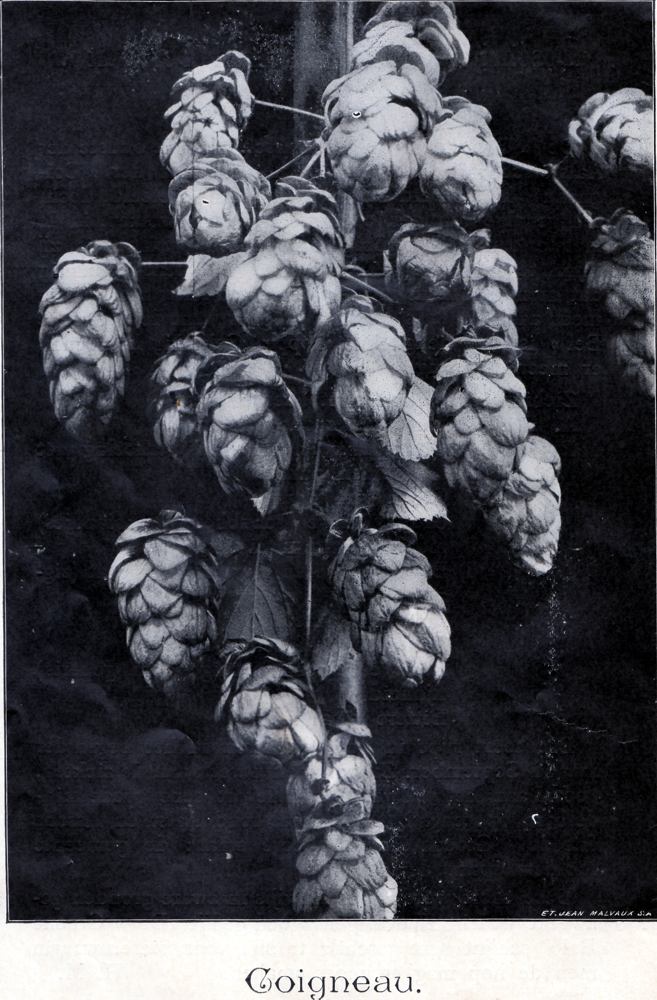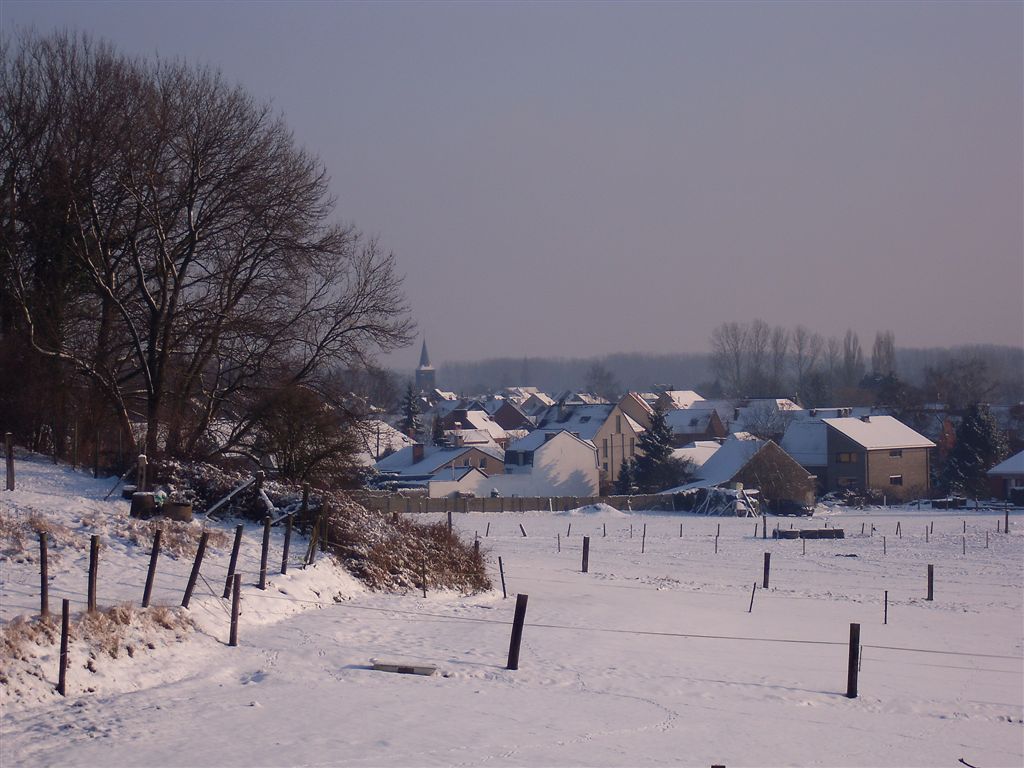|
Coigneau
Coigneau is a Belgian variety of hop which was massively cultivated in the Flemish Aalst-Asse area near Brussels in the nineteenth and first half of the twentieth century. Because of the light bitterness the Coigneau was during a considerable period of time the favorite hop used for Lambic beer brewed in the Pajottenland region of Belgium (southwest of Brussels). Traditional lambic brewing required aged hops but utilized fresh hops as well, preferably in a 50%/50% proportion. The addition of fresh hops was possible because the local hop variety Coigneau contained low alpha-acids and thus added little to the bitterness of the resulting brew. Wild Brews, Jeff Sparrow 2005 [...More Info...] [...Related Items...] OR: [Wikipedia] [Google] [Baidu] |
Coigneau 1909 Beschrijving
Coigneau is a Belgian variety of hop which was massively cultivated in the Flemish Aalst-Asse area near Brussels in the nineteenth and first half of the twentieth century. Because of the light bitterness the Coigneau was during a considerable period of time the favorite hop used for Lambic beer brewed in the Pajottenland region of Belgium (southwest of Brussels). Traditional lambic brewing required aged hops but utilized fresh hops as well, preferably in a 50%/50% proportion. The addition of fresh hops was possible because the local hop variety Coigneau contained low alpha-acids and thus added little to the bitterness of the resulting brew. Wild Brews, Jeff Sparrow 2005 [...More Info...] [...Related Items...] OR: [Wikipedia] [Google] [Baidu] |
List Of Hop Varieties
This is a list of varieties of hop (''Humulus lupulus''). As there are male and female plants, the flowers (cones) of the female plant are fertilized by the pollen of the male flowers with the result that the female flowers form seeds. These seeds are eaten by birds and hence spread over vast distances. Hops, specifically their female plants, have been grown as a commercial crop for the brewing industry for many centuries in many countries. The first documented mention of a hop garden is in the will of Pepyn III. The first breeding of different hop varieties took place at Wye College in Kent, England by E. S. Salmon in 1919 when he bred the varieties " Brewer's Gold" and "Bullion". As of 2012, there are around 80 varieties in commercial use around the world, and considerably more in development/trials. American Ahtanum brand YCR 1 cv Ahtanum brand YCR 1 cv is an aroma-type cultivar bred by Yakima Chief Ranches. It is used for its aromatic properties and moderate bittering. I ... [...More Info...] [...Related Items...] OR: [Wikipedia] [Google] [Baidu] |
Hop Varieties
This is a list of Plant variety (law), varieties of Hops, hop (''Humulus lupulus''). As there are male and female plants, the flowers (cones) of the female plant are fertilized by the pollen of the male flowers with the result that the female flowers form seeds. These seeds are eaten by birds and hence spread over vast distances. Hops, specifically their female plants, have been grown as a commercial crop for the brewing industry for many centuries in many countries. The first documented mention of a hop garden is in the will of Pepin the Short, Pepyn III. The first breeding of different hop varieties took place at Wye College in Kent, England by E. S. Salmon in 1919 when he bred the varieties "#Brewer's Gold, Brewer's Gold" and "#Bullion, Bullion". As of 2012, there are around 80 varieties in commercial use around the world, and considerably more in development/trials. American Ahtanum brand YCR 1 cv Ahtanum brand YCR 1 cv is an aroma-type cultivar bred by Yakima Chief Ranches ... [...More Info...] [...Related Items...] OR: [Wikipedia] [Google] [Baidu] |
Lambic
Lambic () is a type of beer brewed in the Pajottenland region of Belgium southwest of Brussels and in Brussels itself since the 13th century. Types of lambic beers include gueuze, kriek lambic and framboise. Lambic differs from most other beers in that it is fermented through exposure to wild yeasts and bacteria native to the Zenne valley, as opposed to exposure to carefully cultivated strains of brewer's yeast. This process gives the beer its distinctive flavour: dry, vinous, and cidery, often with a tart aftertaste. Etymology This beverage is first mentioned in 1794 as ''allambique''. The initial 'a' was dropped early on, so that in an 1811 advert it was called ''lambicq'', though it was sometimes referred to as ''alambic'' as late as 1829. The name may stem from alembic, a type of still used for producing local spirits like cognac and jenever (but not used in the production of lambic). Breweries in and around Lembeek, a village near Halle, Belgium, have attempted to a ... [...More Info...] [...Related Items...] OR: [Wikipedia] [Google] [Baidu] |
Hops
Hops are the flowers (also called seed cones or strobiles) of the hop plant ''Humulus lupulus'', a member of the Cannabaceae family of flowering plants. They are used primarily as a bittering, flavouring, and stability agent in beer, to which, in addition to bitterness, they impart floral, fruity, or citrus flavours and aromas. Hops are also used for various purposes in other beverages and herbal medicine. The hops plants have separate female and male plants, and only female plants are used for commercial production. The hop plant is a vigorous, climbing, herbaceous perennial, usually trained to grow up strings in a field called a hopfield, hop garden (in the South of England), or hop yard (in the West Country and United States) when grown commercially. Many different varieties of hops are grown by farmers around the world, with different types used for particular styles of beer. The first documented use of hops in beer is from the 9th century, though Hildegard of Bingen, 30 ... [...More Info...] [...Related Items...] OR: [Wikipedia] [Google] [Baidu] |
Aalst, Belgium
Aalst (; french: Alost, ; Brabantian dialect, Brabantian: ''Oilsjt'') is a City status in Belgium, city and Municipalities in Belgium, municipality on the Dender River, northwest from Brussels in the Flemish Region, Flemish Provinces of Belgium, province of East Flanders. The municipality comprises the city of Aalst itself and the villages of Baardegem, Erembodegem, Gijzegem, Herdersem, Hofstade, Meldert, Moorsel and Nieuwerkerken. Aalst is crossed by the Molenbeek-Ter Erpenbeek in Aalst and Hofstade. The current mayor of Aalst is Christoph D'Haese, from the Nieuw-Vlaamse Alliantie, New-Flemish Alliance party. The town has a long-standing (folkloric) feud with Dendermonde (north along the river), which dates from the Middle Ages. History The first historical records on Aalst date from the 9th century, when it was described as the ''villa Alost'', a dependency of the Abbey of Lobbes. During the Middle Ages, a town and port grew at this strategic point, where the road from Bruges ... [...More Info...] [...Related Items...] OR: [Wikipedia] [Google] [Baidu] |
Asse
Asse () is a municipality located in the Belgian province of Flemish Brabant. It comprises the towns of Asse proper, Bekkerzeel, Kobbegem, Mollem, Relegem and Zellik. Asse is also situated in the Pajottenland. As of 2020, Asse had a total population of 32,958. The total area is 49.64 km² which gives a population density of circa 660 inhabitants per km². History Asse (formerly spelt "Assche") was probably inhabited by the Celtic tribe of the Nervii. The name itself probably comes from a pre-Celtic word meaning "water" (cf Esch-, Es- and Axe- prefixes elsewhere in Europe). It was probably inhabited from an early date; stone tools have been found in various locations. The fertility of the soil and the relief which rises above the wetter plains of present-day Flanders would also suggest that his would have been an early area of settlement. From the middle of the first century, a Roman military road connected it to the capital of the Roman province of Nervii in Bavay (Bagacum ... [...More Info...] [...Related Items...] OR: [Wikipedia] [Google] [Baidu] |
Pajottenland
The Pajottenland (in English occasionally Payottenland) is a distinct region within the Flemish Brabant province and the south-western part of the Brussels Region of Belgium. The region is located west-southwest of Brussels. The Pajottenland is predominantly farmland, with occasional gently rolling hills, and lies mostly between the rivers Dender and Zenne / Senne. The area has historically provided food and drink for the citizens of Brussels, especially Lambic beers, which are only produced here and in the Zenne valley where Brussels is. Geography The Pajottenland is generally understood to cover the following municipalities and submunicipalities: * Affligem: Essene, Hekelgem and Teralfene * Asse: Asse, Bekkerzeel, Kobbegem, Mollem, Relegem and Zellik * Bever *Dilbeek: Dilbeek, Itterbeek (with Sint-Anna-Pede), Schepdaal (with Sint-Gertrudis-Pede), Sint-Martens-Bodegem, Sint-Ulriks-Kapelle, Groot-Bijgaarden *Galmaarden: Galmaarden, Tollembeek, Vollezele *Gooik: Gooik (with Strij ... [...More Info...] [...Related Items...] OR: [Wikipedia] [Google] [Baidu] |
Teralfene
Teralfene is a village in the municipality of Affligem, Belgium. It has an area of 244 ha (602.94 acres). The other communities in Affligem are Hekelgem and Essene. Name The name "Teralfene" originates from the brook Alfene (now called the Bellebeek) which flows into the Dender. The oldest reference to the village is ''Iuxta Alfnam'' (+- 1142) History During the post- Carolingian period, Teralfene belonged to the shire of Brabant. As from 1056 it was part of a German fief that was granted to the counts of Flanders (the so-called Imperial Flanders). During the French period (1796-1815) Teralfene was part of the Dijle-territory. During the Dutch period (1815-1830), this department was transformed to the province South Brabant by Willem I of Orange. Until the end of 1976, Teralfene was an independent municipality. Politics List of mayors This list contains the known mayors of Teralfene until the merger into Affligem. Political Parties Before Teralfene became part of Affligem ... [...More Info...] [...Related Items...] OR: [Wikipedia] [Google] [Baidu] |





